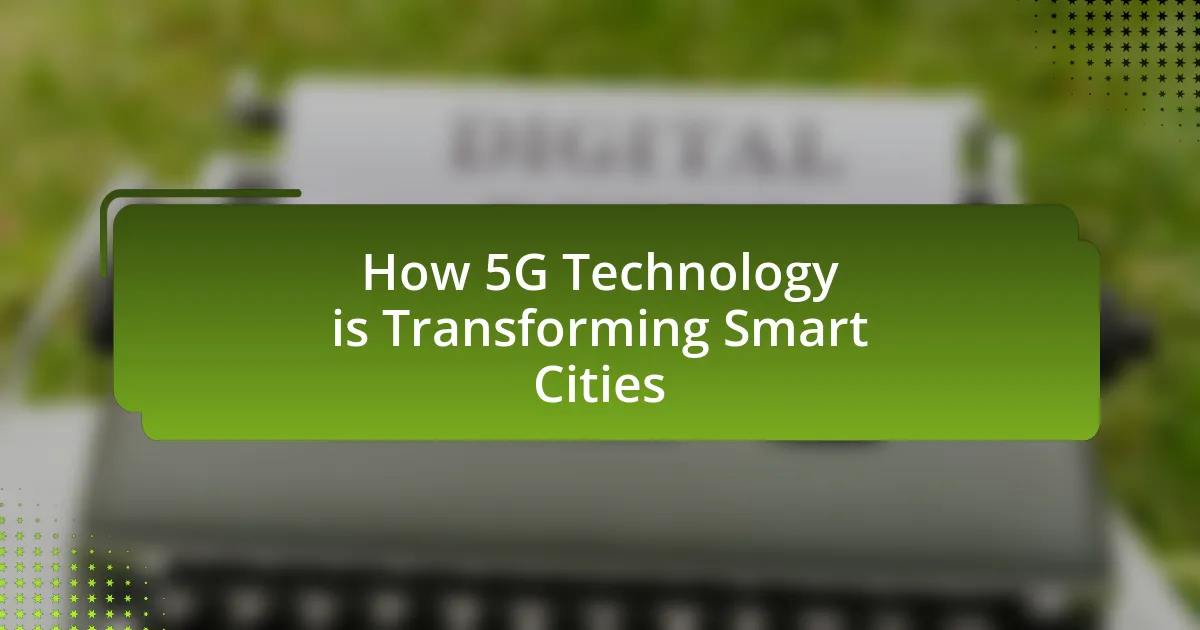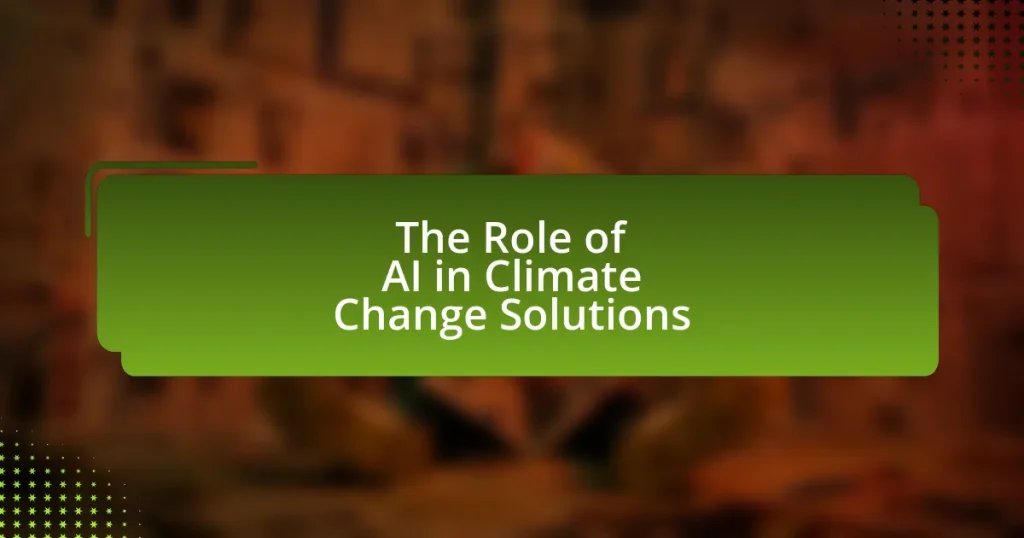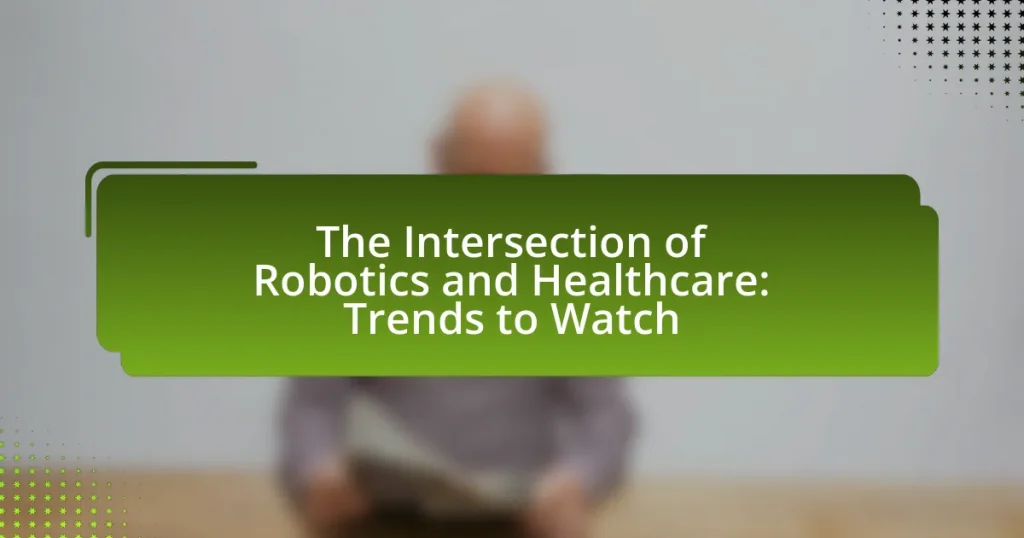5G technology, the fifth generation of mobile networks, significantly enhances data speeds, reduces latency, and increases connectivity, making it essential for the development of smart cities. This article explores how 5G facilitates real-time data exchange, supports the Internet of Things (IoT), and improves urban services such as traffic management, public safety, and energy efficiency. Key features of 5G, including its ability to connect up to one million devices per square kilometer, are discussed alongside the economic advantages it brings to urban areas. Additionally, the article addresses the challenges of implementing 5G technology, including infrastructure costs, regulatory hurdles, and cybersecurity concerns, while outlining best practices for integrating 5G into smart city planning.

What is 5G Technology and How Does it Relate to Smart Cities?
5G technology is the fifth generation of mobile network technology, offering significantly faster data speeds, lower latency, and greater connectivity compared to its predecessors. This advanced network infrastructure is crucial for the development of smart cities, as it enables real-time data exchange between devices, supports the Internet of Things (IoT), and enhances communication for various urban services. For instance, 5G can facilitate smart traffic management systems that optimize traffic flow and reduce congestion by analyzing real-time data from connected vehicles and infrastructure. Additionally, 5G supports smart energy grids, improving energy efficiency and sustainability in urban environments. The deployment of 5G networks is projected to enhance the operational efficiency of smart city initiatives, ultimately leading to improved quality of life for residents.
How does 5G technology differ from previous generations of mobile networks?
5G technology differs from previous generations of mobile networks primarily through its significantly higher data transfer speeds, lower latency, and increased capacity for connected devices. While 4G networks typically offer speeds up to 1 Gbps, 5G can reach speeds exceeding 10 Gbps, enabling faster downloads and improved streaming quality. Additionally, 5G reduces latency to as low as 1 millisecond compared to 30-50 milliseconds in 4G, which enhances real-time communication and responsiveness in applications such as autonomous vehicles and smart city infrastructure. Furthermore, 5G supports a much larger number of simultaneous connections, allowing up to 1 million devices per square kilometer, which is essential for the dense connectivity required in smart cities. These advancements facilitate the deployment of innovative technologies and services that rely on real-time data and connectivity, transforming urban environments.
What are the key features of 5G technology?
The key features of 5G technology include enhanced data speeds, reduced latency, increased capacity, and improved connectivity for a vast number of devices. Enhanced data speeds can reach up to 10 Gbps, significantly faster than 4G, enabling high-definition video streaming and real-time applications. Reduced latency, often as low as 1 millisecond, allows for instantaneous communication, which is crucial for applications like autonomous vehicles and remote surgeries. Increased capacity supports a higher density of devices per square kilometer, accommodating the growing number of IoT devices in smart cities. Improved connectivity ensures reliable communication even in crowded urban environments, facilitating the seamless operation of smart city infrastructure.
How does 5G technology enhance connectivity in urban environments?
5G technology enhances connectivity in urban environments by providing significantly higher data transfer speeds, lower latency, and increased capacity for connected devices. This advanced network allows for seamless communication between various smart city applications, such as traffic management systems, public safety networks, and IoT devices. For instance, 5G can support up to one million devices per square kilometer, enabling real-time data exchange that improves urban infrastructure efficiency and enhances the overall quality of life for residents.
What role does 5G play in the development of smart cities?
5G plays a crucial role in the development of smart cities by enabling high-speed, low-latency communication that supports a wide range of applications. This advanced connectivity facilitates real-time data exchange between devices, enhancing urban services such as traffic management, public safety, and energy efficiency. For instance, 5G networks can support thousands of devices per square kilometer, allowing for the integration of Internet of Things (IoT) technologies that monitor and optimize city infrastructure. Additionally, studies indicate that 5G can reduce latency to as low as one millisecond, which is essential for applications like autonomous vehicles and remote healthcare services, thereby significantly improving the quality of life in urban environments.
How does 5G technology support IoT devices in smart cities?
5G technology supports IoT devices in smart cities by providing high-speed connectivity, low latency, and the ability to connect a vast number of devices simultaneously. This enhanced connectivity enables real-time data transmission, which is crucial for applications such as traffic management, environmental monitoring, and public safety systems. For instance, 5G can support up to one million devices per square kilometer, significantly surpassing the capabilities of previous generations like 4G. This capacity allows smart city infrastructures to efficiently manage resources and improve services, ultimately leading to enhanced urban living conditions.
What are the implications of 5G for urban infrastructure?
5G technology significantly enhances urban infrastructure by enabling faster data transmission, lower latency, and increased connectivity for devices. This advancement supports the development of smart city applications such as real-time traffic management, improved public safety systems, and efficient energy management. For instance, a study by the International Telecommunication Union indicates that 5G can support up to one million devices per square kilometer, facilitating the integration of Internet of Things (IoT) devices that monitor and optimize urban services. Additionally, 5G’s capabilities allow for the deployment of autonomous vehicles and smart grids, which can lead to reduced congestion and energy consumption in urban areas.
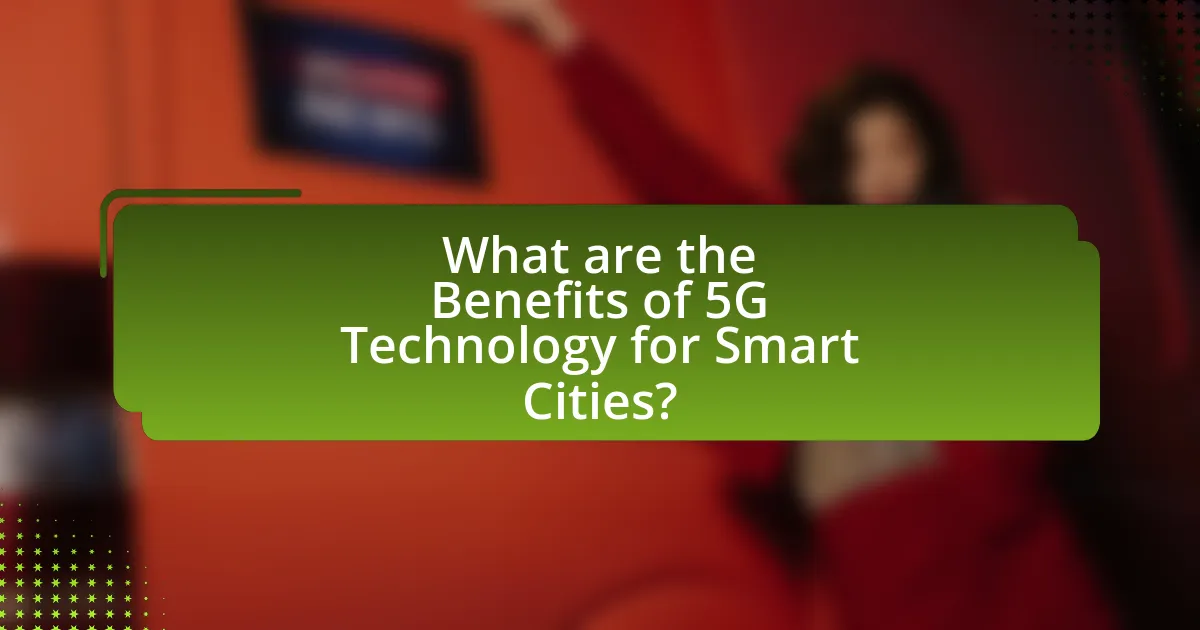
What are the Benefits of 5G Technology for Smart Cities?
5G technology offers significant benefits for smart cities, primarily through enhanced connectivity, increased data transfer speeds, and reduced latency. These advancements enable real-time communication between devices, facilitating efficient traffic management, improved public safety, and optimized energy consumption. For instance, a study by the GSMA indicates that 5G can support up to one million devices per square kilometer, which is crucial for the dense environments of smart cities. Additionally, the low latency of 5G, as low as one millisecond, allows for instantaneous responses in critical applications such as autonomous vehicles and emergency services, thereby enhancing urban living and operational efficiency.
How does 5G improve public services in smart cities?
5G improves public services in smart cities by enabling faster data transmission, which enhances the efficiency and responsiveness of urban services. With its low latency and high bandwidth, 5G supports real-time communication between devices, allowing for better traffic management, improved emergency response systems, and more efficient public transportation. For instance, cities utilizing 5G can implement smart traffic lights that adapt to real-time traffic conditions, reducing congestion and emissions. Additionally, 5G facilitates the deployment of IoT devices, which can monitor public infrastructure and report issues instantly, leading to quicker maintenance and improved public safety.
What impact does 5G have on transportation systems?
5G significantly enhances transportation systems by enabling real-time data exchange and communication between vehicles, infrastructure, and traffic management systems. This technology supports the development of smart transportation solutions, such as connected and autonomous vehicles, which rely on low-latency communication to operate safely and efficiently. For instance, 5G can reduce latency to as low as 1 millisecond, allowing vehicles to respond instantly to traffic signals and hazards, thereby improving traffic flow and reducing accidents. Additionally, 5G facilitates the integration of Internet of Things (IoT) devices in transportation, enabling smarter logistics and fleet management through better tracking and optimization of routes.
How does 5G enhance public safety and emergency response?
5G enhances public safety and emergency response by providing faster data transmission, lower latency, and increased connectivity for emergency services. This technology enables real-time communication and data sharing among first responders, which is critical during emergencies. For instance, 5G can support high-definition video feeds from drones or body cameras, allowing command centers to assess situations more accurately and make informed decisions quickly. Additionally, the ability to connect a vast number of devices simultaneously ensures that sensors and IoT devices can relay critical information, such as environmental hazards or crowd dynamics, to emergency personnel in real-time, improving response times and overall effectiveness.
What economic advantages does 5G bring to smart cities?
5G technology brings significant economic advantages to smart cities by enhancing connectivity, which facilitates improved efficiency and productivity across various sectors. The high-speed, low-latency communication enabled by 5G supports the deployment of smart infrastructure, such as traffic management systems and energy grids, leading to reduced operational costs and increased revenue generation. For instance, a report by the GSMA estimates that 5G could contribute $2.2 trillion to the global economy by 2030, primarily through advancements in sectors like transportation, healthcare, and public safety. Additionally, 5G fosters innovation by attracting businesses and investments, as companies seek to leverage advanced technologies like IoT and AI, further driving economic growth in urban areas.
How can 5G technology stimulate local economies?
5G technology can stimulate local economies by enhancing connectivity, which facilitates the growth of businesses and attracts investments. The increased data speeds and lower latency of 5G enable innovations in various sectors, such as telemedicine, smart transportation, and remote work, leading to job creation and improved services. For instance, a report by the GSMA estimates that 5G could contribute $2.2 trillion to the global economy by 2030, with significant portions benefiting local economies through increased productivity and efficiency. Additionally, cities that implement 5G infrastructure can improve public services, such as traffic management and emergency response, further enhancing the quality of life and economic opportunities for residents.
What opportunities does 5G create for businesses in urban areas?
5G creates significant opportunities for businesses in urban areas by enabling faster data transmission, enhanced connectivity, and the development of innovative applications. The increased bandwidth and lower latency of 5G allow businesses to implement advanced technologies such as the Internet of Things (IoT), artificial intelligence, and real-time analytics. For instance, a report by the GSMA indicates that 5G could contribute $2.2 trillion to the global economy by 2030, particularly benefiting sectors like transportation, healthcare, and retail through improved operational efficiencies and customer experiences. Additionally, urban businesses can leverage 5G to enhance smart city initiatives, such as smart traffic management and energy-efficient systems, leading to cost savings and improved service delivery.
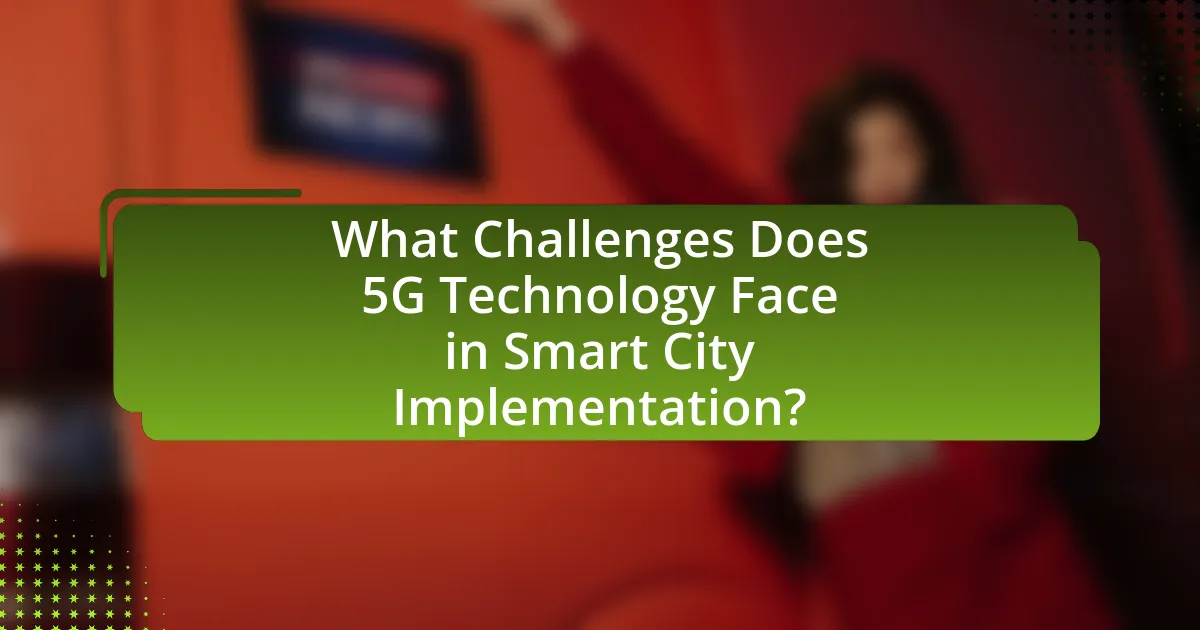
What Challenges Does 5G Technology Face in Smart City Implementation?
5G technology faces several challenges in smart city implementation, including infrastructure costs, regulatory hurdles, and security concerns. The deployment of 5G requires significant investment in new infrastructure, such as small cell networks and fiber optics, which can be financially burdensome for municipalities. Additionally, regulatory frameworks often lag behind technological advancements, creating delays in deployment due to the need for permits and compliance with local laws. Security is another critical challenge, as the increased connectivity and data exchange in smart cities heighten the risk of cyberattacks, necessitating robust security measures to protect sensitive information and maintain public trust.
What are the technical challenges of deploying 5G in urban environments?
The technical challenges of deploying 5G in urban environments include high infrastructure costs, signal interference, and the need for dense network coverage. Urban areas often require extensive investment in small cell installations due to the limited range of 5G signals, which can lead to significant financial burdens for service providers. Additionally, physical obstructions such as buildings and trees can cause signal degradation, complicating the deployment process. Furthermore, the integration of 5G with existing technologies and ensuring compatibility with various devices adds another layer of complexity. These challenges are supported by studies indicating that urban environments necessitate a more intricate network design to achieve optimal performance and coverage.
How do issues of infrastructure and investment affect 5G rollout?
Issues of infrastructure and investment significantly hinder the rollout of 5G technology. Insufficient infrastructure, such as a lack of fiber optic cables and inadequate cell towers, limits the ability to support the high-speed and low-latency requirements of 5G networks. For instance, a report by the Federal Communications Commission in 2020 indicated that nearly 30 million Americans lack access to broadband, highlighting the existing gaps in infrastructure that must be addressed for effective 5G deployment. Additionally, substantial investment is required for upgrading existing networks and building new facilities, which can be a barrier for many telecommunications companies. According to a study by the GSMA, global investment in 5G networks is projected to reach $1 trillion by 2025, emphasizing the financial commitment necessary to overcome these infrastructure challenges.
What are the cybersecurity concerns associated with 5G in smart cities?
The cybersecurity concerns associated with 5G in smart cities include increased vulnerability to cyberattacks, data privacy issues, and the potential for infrastructure disruption. The deployment of 5G technology expands the attack surface due to the proliferation of connected devices and systems, making it easier for malicious actors to exploit weaknesses. For instance, a report by the European Union Agency for Cybersecurity (ENISA) highlights that the complexity of 5G networks can lead to misconfigurations and security gaps, which can be targeted by hackers. Additionally, the vast amount of data transmitted over 5G networks raises significant privacy concerns, as sensitive information can be intercepted or misused. Furthermore, the reliance on interconnected systems means that a successful attack on one component can have cascading effects, potentially disrupting essential services in smart cities.
How do regulatory and policy frameworks impact 5G deployment?
Regulatory and policy frameworks significantly impact 5G deployment by establishing the legal and operational environment necessary for infrastructure development. These frameworks dictate spectrum allocation, permitting processes, and compliance requirements, which can either expedite or hinder the rollout of 5G networks. For instance, countries with streamlined regulations, such as South Korea, have seen faster 5G deployment due to efficient spectrum management and reduced bureaucratic hurdles. Conversely, regions with stringent regulations may experience delays, as seen in parts of Europe, where complex permitting processes slow down infrastructure installation. Thus, the effectiveness of regulatory and policy frameworks directly correlates with the pace and success of 5G deployment.
What role do government policies play in facilitating 5G technology?
Government policies play a crucial role in facilitating 5G technology by establishing regulatory frameworks, funding initiatives, and promoting infrastructure development. These policies ensure that spectrum allocation is efficient, enabling telecommunications companies to deploy 5G networks effectively. For instance, the Federal Communications Commission (FCC) in the United States has streamlined the process for obtaining permits to install small cell infrastructure, which is essential for 5G deployment. Additionally, government investments in research and development, such as the National 5G Initiative, support innovation and accelerate the rollout of 5G technology. These actions collectively create an environment conducive to the rapid advancement and integration of 5G in smart cities, enhancing connectivity and enabling advanced applications.
How can cities address public concerns regarding 5G technology?
Cities can address public concerns regarding 5G technology by implementing transparent communication strategies and engaging with community stakeholders. By providing clear information about the safety standards set by organizations like the Federal Communications Commission (FCC) and the World Health Organization (WHO), cities can alleviate fears related to health risks associated with 5G. Additionally, conducting public forums and workshops allows residents to voice their concerns and receive factual responses, fostering trust. Research indicates that informed communities are more likely to support technological advancements, as seen in studies where public engagement led to increased acceptance of new technologies.
What are the best practices for integrating 5G technology into smart city planning?
The best practices for integrating 5G technology into smart city planning include ensuring robust infrastructure, fostering public-private partnerships, and prioritizing data security. Robust infrastructure is essential as it supports the high-speed connectivity that 5G offers, enabling efficient communication between devices and systems. Public-private partnerships facilitate investment and innovation, allowing cities to leverage expertise and resources from telecommunications companies and technology providers. Prioritizing data security is crucial to protect sensitive information and maintain public trust, as 5G networks will handle vast amounts of data from various smart city applications. These practices are validated by successful implementations in cities like Barcelona and Singapore, where strategic planning has led to enhanced urban services and improved quality of life for residents.
How can cities ensure equitable access to 5G technology?
Cities can ensure equitable access to 5G technology by implementing targeted infrastructure investments and inclusive policy frameworks. By prioritizing the deployment of 5G infrastructure in underserved areas, cities can bridge the digital divide. For instance, the Federal Communications Commission (FCC) reported that low-income neighborhoods often lack adequate broadband access, highlighting the need for focused efforts. Additionally, cities can collaborate with private sector partners to subsidize costs for low-income residents, ensuring affordability. Programs that provide digital literacy training can further empower communities to utilize 5G technology effectively, enhancing overall access and usage.
What strategies can be employed to maximize the benefits of 5G in urban areas?
To maximize the benefits of 5G in urban areas, cities should implement a multi-faceted strategy that includes infrastructure investment, regulatory support, and public-private partnerships. Infrastructure investment is crucial, as cities need to deploy a dense network of small cells and fiber optics to ensure comprehensive coverage and high-speed connectivity. Regulatory support can facilitate faster deployment by streamlining permitting processes and reducing barriers for telecom companies. Public-private partnerships can foster innovation and investment, allowing cities to leverage private sector expertise and funding for smart city applications, such as IoT devices and autonomous vehicles. These strategies are supported by studies indicating that cities with robust 5G infrastructure can experience economic growth, improved public services, and enhanced quality of life for residents.
